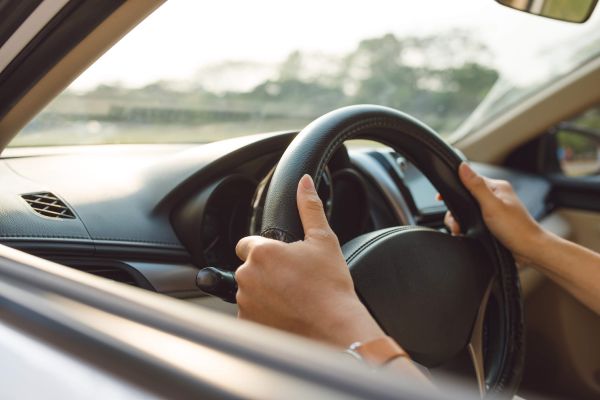

The Psychology of Learning to Drive in the USA
Gaining the ability to drive is often regarded as a milestone of growing up in American culture. Whether it's a teenager eagerly waiting to earn their first taste of freedom or an adult finally taking the leap after years of postponement, driving is more than just a skill—it's a psychological journey. In the USA, where public transportation can be sparse in many regions and cars symbolize independence, the psychology behind learning to drive is layered with emotions, societal expectations, and personal identity.
Before this, explore Horizon Driving School here.
The Influence of Age and Life Stage
The age at which someone learns to drive can dramatically influence their mindset and motivation.
Teenagers often view driving as a key step toward adulthood. Psychologically, it represents autonomy, a break from parental supervision, and social mobility. However, the teenage brain is still maturing, particularly the prefrontal cortex, which plays a key role in decision-making and regulating impulses. This can explain why young drivers are statistically more prone to accidents—they may underestimate risks or overestimate their skills.
In contrast, adults learning to drive later in life often bring a different set of psychological challenges. They may feel embarrassed about not learning earlier or self-conscious during lessons. Fear of judgment, combined with heightened risk awareness, can slow progress. However, adult learners also tend to be more cautious and focused, traits that often translate into safer driving habits over time.
The Role of Environment and Culture
Driving in the USA isn't just a personal skill—it's a cultural expectation. In suburban and rural areas, where public transport is scarce, driving becomes almost mandatory for daily life. The psychological pressure to conform and gain social acceptance can be immense.
In densely populated cities like New York or San Francisco, the story changes. Here, public transport is accessible, and car ownership is optional. For residents of such cities, learning to drive might not feel urgent. However, moving to a different state or lifestyle change (like becoming a parent) can quickly turn that optional skill into a necessity, triggering stress or urgency.
Cultural background also plays a role. Immigrants to the U.S. often have to adjust not only to different road systems and rules but also to a new mindset around driving. For someone coming from a walkable European city or a country with chaotic traffic norms, the structured American driving system can either be a relief or a psychological hurdle.
Cognitive Learning and Muscle Memory
Driving is a complex blend of cognitive learning and muscle memory. In the early stages, learners must consciously think through every step: "Turn on the blinker, check the mirror, ease off the brake." Over time, these actions become automatic.
This shift from explicit to implicit memory is a remarkable psychological transformation. It's why seasoned drivers can hold conversations, sip coffee, or sing along to the radio without consciously thinking about every move. For beginners, though, multitasking behind the wheel is often overwhelming. The brain needs time to encode driving skills into long-term memory, which is why practice and repetition are so crucial.
Confidence vs. Complacency
Confidence is key to successful driving—but too much of it can be dangerous. New drivers often go through a confidence curve, starting with low self-belief, gradually building up as skills improve, and then sometimes tipping into overconfidence. This can lead to reckless behavior or ignoring safety basics like seat belts or turn signals.
Good driving instructors are aware of this psychological pattern. They aim to balance positive reinforcement with constructive feedback, helping learners develop realistic self-assessment skills. The goal is to reach confident competence—not bravado, but calm assurance.
The Impact of Driving Tests
The driving test itself is a massive psychological event. It's not just about skill but performance under pressure. Test anxiety can lead even well-prepared learners to make uncharacteristic mistakes. The pass/fail nature of the test can feel like a judgment of one's competence, triggering shame or fear of failure.
Some states in the U.S. have notoriously strict driving tests, while others are more relaxed. Either way, the psychological pressure is real. Interestingly, failure isn't always negative. Psychologically, a failed test can motivate deeper learning and reflection, making for a more careful and committed driver in the long run.
Technology and Modern Driving Psychology
The rise of driver-assist technologies and electric vehicles is changing the psychology of learning to drive. Parking sensors, automatic braking, and lane assist features can reduce anxiety for new drivers—but they can also create a false sense of security.
There's an ongoing debate about whether these technologies improve learning or hinder it by removing essential challenges. From a psychological standpoint, it's crucial that learners understand why certain driving behaviors are safe, not just how to use a gadget.
The Journey to Independence
Ultimately, learning to drive in the USA is a profoundly personal experience—one that intertwines with an individual's identity, emotional strength, social environment, and aspirations. For many, the day they get their driver's license is unforgettable—a symbol of growth, courage, and a new kind of freedom.
Whether you're cruising down Route 66, stuck in L.A. traffic, or navigating snowy roads in Vermont, driving becomes more than just movement—it's a psychological dance of decision-making, adaptability, and confidence.
In the land where the open road has long symbolized opportunity, learning to drive is as much about self-discovery as it is about getting from point A to point B.

